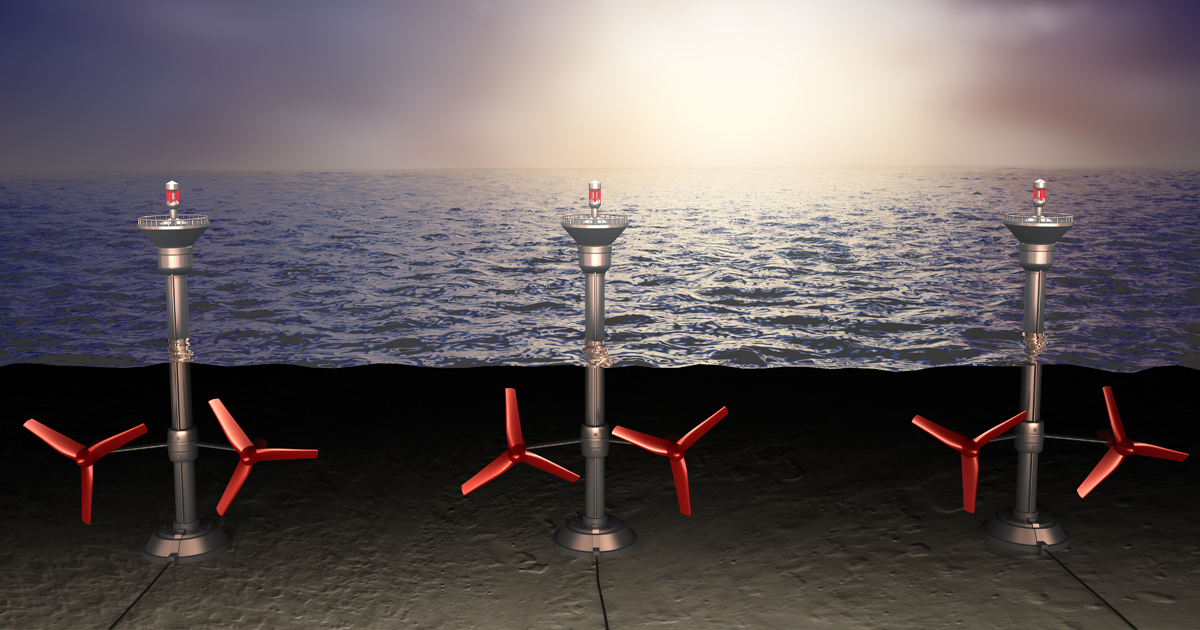The ocean’s tides generate colossal power. In fact, its three terawatts could provide three times the world’s daily energy consumption. According to reports by the International Energy Agency (IEA), the use of tidal energy is on the rise and predictions suggest it will produce up to 748 gigawatts (GW) of power by 2050.
Considering its potential, tidal energy is largely unexploited. The United Kingdom, for example, could provide a haven for tidal and wave generation. Yet, several of the country’s plans to develop tidal sites, including a £1.3 billion tidal plant in Swansea, Wales, have been put on hold.
Reaching economies of scale
Cost is one of the biggest obstacles for tidal plant development. Underwater sites require meticulous engineering and planning to construct correctly, and this process is far more expensive than land-based alternatives. Moreover, due to high costs, government backing is often required to get plans off the ground — or in this case, under the waves.
Creating technologies for tidal generation is also expensive. Unlike wind and solar generation, which have technology readily available that has experienced several decades of iterations, equipment for tidal generation is in its infancy.
Currently, the development of tidal technologies is taking inspiration from other industries. Jackets used in offshore oil and gas installations, for example, have proven to be effective for the subsea tidal environment. Similarly, turbines used in tidal barrages are being developed using the tried-and-tested methods of manufacturing wind turbines. With heavier investment in bespoke equipment, tidal energy could have great potential.
Monitoring an offshore site
For tidal projects that do secure funding, operation monitoring poses another challenge. Remote monitoring for offshore and subsea infrastructure is notoriously complex, and this challenge is bolstered by the infancy of tidal equipment.
Because tidal energy plants are in early development, equipment at these sites will not remain the same as the plants evolve. In fact, hardware will constantly change until the industry has established a blueprint for tidal plants. From there, we could see a spike in adoption — like wind power, which increased from 17,000 megawatts to 430,000 megawatts globally between 2000 and 2015.
Until then, choosing supervisory control and data acquisition (SCADA) software is the first step to establishing an effective tidal blueprint. SCADA is essential for monitoring energy generation sites, but for plants undergoing constant change, the software must be independent — and deployable regardless of plant equipment and communication protocols.
COPA-DATA’s zenon Energy Edition has been specifically developed for these varied environments. For the unusual requirements of tidal plants, zenon can be installed across any piece of hardware using its 300 native drivers and protocols. For developing energy sites, the flexibility allows plant managers to scale zenon across the site as its hardware evolves and inevitably outgrows conventional software.
As tidal plants develop, intelligent software like zenon will be essential for integrating tidal onto the energy grid. To be effective long term, tidal plants must communicate with the grid and with battery storage options. This will provide potential to monitor energy prices and sell back to the grid when it is profitable to do so. Considering the high cost to establish tidal plants, this could be vital to make the generation method lucrative.
Time for tidal
Tides are predictable, inexhaustible and — as suggested by Leonardo da Vinci — almost mythologically immense. The United Kingdom boasts the largest tidal resource in all of Europe, with a total power resource estimated at more than 10 GWs of energy. To put that into perspective, that is almost half of Europe’s entire tidal energy capacity.
There is no denying the monstrous potential of tidal energy, but plant developers must be strategic when investing in technology for these sites. While the generation method is still in its early stages, independent software will prove essential to minimise costs, simplify communication and, eventually, allow these plants to scale and exploit the full potential of tidal power.

